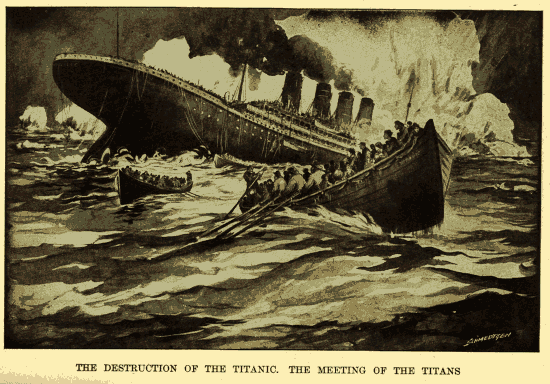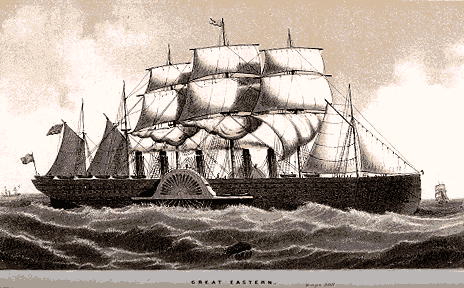Titanic and Great Eastern
Today, we talk about two ships. One sank, the other didn't. The University of Houston's College of Engineering presents this series about the machines that make our civilization run, and the people whose ingenuity created them.
Both the Titanic and the Great Eastern, in their day, qualified as the largest ships ever made, and they're two of the best known as well. The Great Eastern, launched in 1858, was almost 700 feet long. The Titanic, launched 53 years later, was almost 900 feet long. And each suffered the same kind of accident soon after it was put to sea.
Isambard Kingdom Brunel, who designed the Great Eastern, was the greatest artist ever to work in iron. He was remarkably thorough, and the Great Eastern reflected that care. It was to be a passenger liner, and no cost was spared in making it safe. It had a double hull. It was honeycombed with bulkheads that created almost 50 water-tight compartments.
The Great Eastern was actually overdesigned and inefficient, but it still provided transatlantic service for two years. Then, in 1862, it struck an uncharted rock in Long Island Sound that tore an 83-foot-long, 9-foot-wide, gash in its hull. The inner hull held, and it safely steamed on into New York Harbor.
The Titanic was another matter. Transatlantic service had become a big lucrative business. Bit by bit, safety standards yielded to commercial pressures. The Titanic's hull boasted a double bottom, but it had only a single wall on the sides. It boasted 15 sections that could be sealed off at the throw of a switch, but its bulkheads were riddled with access doors to improve luxury service. It didn't have enough lifeboats. But the luxurious beauty of the ship was seductive. Why was it thought to be so safe? Historian Walter Lord says, "The appearance of safety was mistaken for safety itself."
When the Titanic gently grazed a North Atlantic iceberg in 1912, it suffered nothing like the continuous gash in the side of the Great Eastern. Rather, its plates appear to have been randomly punctured and sprung over a 250-foot length. But that was enough to put it under water within 2 hours and 40 minutes.
We might lay part of the blame for the Titanic accident on the success of the Great Eastern. By 1912, past successes had bred a very relaxed attitude toward safety. Maybe a parallel should be drawn in the loss of the space shuttle Challenger. NASA's safety record had been unreasonably good up to that point. We forgot how dangerous rocket launches really are. The Titanic and the Challenger remind us that we engineers have to mix a little fear in with our excitement when we design things.
I'm John Lienhard, at the University of Houston, where we're interested in the way inventive minds work.
(Theme music)
This episode has been substantially written as Episode 1473.

(Images from Wreck and Sinking of the Titanic, 1912)

(Image courtesy of Special Collections, UH Library)
Isambard Brunel's Great Eastern from Man on the Ocean, 1874